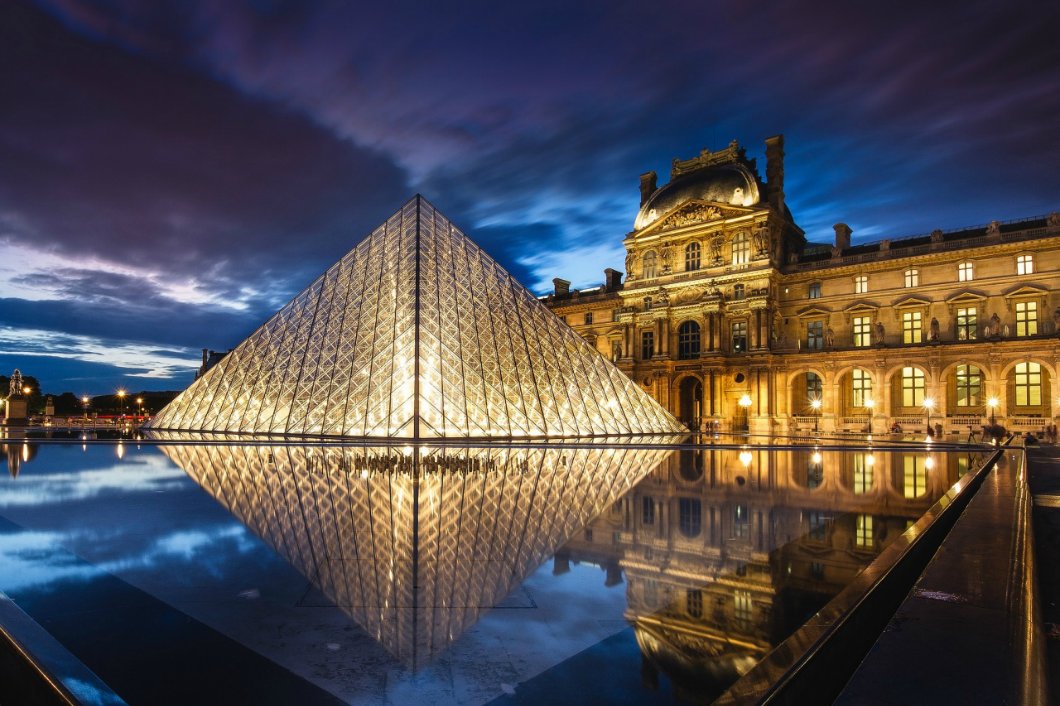There is no museum in the world which can match the reputation and glory of the Louvre. Louvre is the biggest museum in the world and, along with its status as a museum, it is considered a historic monument in Paris. Its relevance is symbolic of the French affinity towards art, and well, when you stroll through the museum, you will surely get its relevance.
The beauty of Louvre lies both in its fantastic infrastructure as well as the paintings it houses. Art and architecture enthusiasts love the whirlpool of amazement and incredibility which the museum offers to its visitors, and thus, if you are in Paris, or planning to visit in near future, you must visit the museum.
While there are many, many things that could be done in Louvre, we will tell you eight such things that are a must-do, and anyone who is going to the museum must make sure that they have done them. Each thing mentioned in the article is among the popular activities people undertake in Louvre and therefore we do not want our readers to miss out on these things.

So, without further ado, here 8 things you must do in Louvre:
1. Of course, Mona Lisa
Mona Lisa is the fame of Louvre—without this masterpiece, the museum would not be able to attract as many visitors as it attracts today.
You will see Mona Lisa being caricatured quite often on social media, but despite the comical touch-ups Leonardo da Vinci’s masterpiece is subject to, there is no gainsaying that it is among those rare paintings that made the world of Art turn upside down.
You will be interested to know that Mona Lisa was once stolen from the museum in the year 1911 and was later recovered after two years—now the painting is kept under tight security.
Imagine the worth of this painting over which art enthusiasts drool! So, how can you leave Louvre without a glance at Mona Lisa?
2. The Dying Slave
If you have studied history properly during school years or are simply an avid Art fan, you would know Michelangelo and his master creations that swept away the world like wildfire. One of his masterpiece, Dying Slave, is among the most visited sculptures to be found in Louvre.
Dying Slave is, when you look at it, a twirling slave with an anguish expression. The curve of his body is perhaps the most attractive feature that the sculptor has so flawlessly carved out.
The sculpture dates back to 16th century and, trust me, you would want to see how anything as old as that delivers amusement to the much artistically detached modern public.
3. Venus de Milo
The origin of the sculpture is ambiguous, though art historians believe that she belongs to the Hellenistic period (that is, between 3rd to 1st B.C.). Despite the age, she is a timeless creation whose beauty remains unmatched even in the contemporary world.
Venus de Milo is presumably an Amphitrite, who was worshipped on the island of Melos. Her sculpture appears pensive but harmonious, and she carries with her a strong aura of humbleness and grace. Well, whatever may have been the real objective of the sculptor, she sure is a beauty, to say the least.
4. Liberty Leading the People
Eugene Delacroix’s masterpiece Liberty leading the People, 1830 is one of the most studied and respected paintings of all time. In this, Lady Liberte spearheads the people’s movement and honors the Tricoloured French flag symbolizing the proverbial Liberty, Equality, and Fraternity.
The painting is symbolic of the French struggle against monarchy and aristocratic oppression and through Lady Liberte, the movement is given the strongest depiction. Now when you visit France you will see her everywhere—from stamps to euro coins.
5. Great Sphinx of Tanis
The Great Sphinx of Tanis is a symbolic representation of the intimate relationship between King (the human head) and the Sun God (the lion’s body). When you look at it closely, you will notice (though not sure you will know right away without a guide!) inscriptions of the names of the great Pharaohs of that time such as Merneptah, Shoshenq and Ammenemes II.
The Great Sphinx was excavated in the year 1825 from among the ruins of the Temple of Amun situated at Tanis. Presently, it is among the largest sphinxes situated outside of Egypt.
6. Law Code of Hammurabi
Coming straight from the Old Babylon empire, Law Code of Hammurabi is considered to be the earliest examples of codified law in any civilization. It is still in the stage of deciphering, but despite that, it is already among the greatest relics of humankind and has been rightly preserved in the most respected and secured museums of all time.
The Law Code of Hammurabi is regarded as the first of its kind economic formula and most of its laws have found modern-day applications. It embodies the indispensable criminal law principle “Innocent until proven guilty” and principles of evidence.
The Code is most popular for its scaled punishments, following the “eye for an eye” method depending much on the social status of the man.
7. Venus with Three Graces
Botticelli, in his Venus with Three Graces, uses the Fresco painting style which is basically a method of employing water-based pigments on plaster causing the colors to dry out within the wall. This causes permanency and makes the picture as remarkable as it looks in his painting we are talking about.
This fresco was painted on the walls of the Tuscan Villa Lemmi and now stands preserved in the Louvre.
8. Lamassus
Must you have heard of the greatness of the Mesopotamia’s civilization? If you know and appreciate the contribution of Mesopotamia to humankind, then you must certainly check out Lamassus.
Lamassus is a sculpture of a being with five legs. It used to guard the gate to Mesopotamia’s capital, Sargon. There were many such sculptures transported to Louvre in the 19th century when two shipping incidents caused much loss.
Anyways, whatever that can be preserved has been brilliantly preserved! That is Louvre for you!









